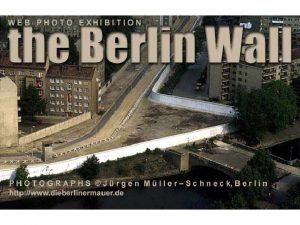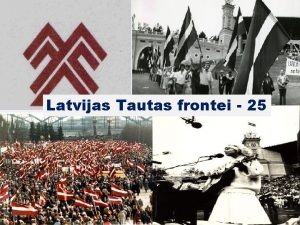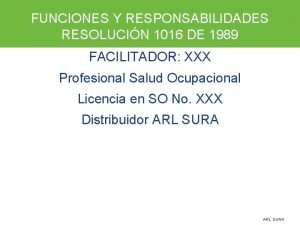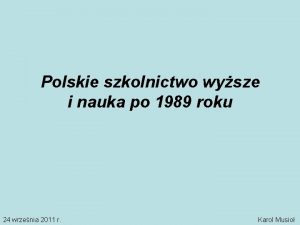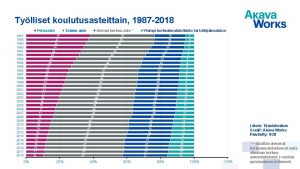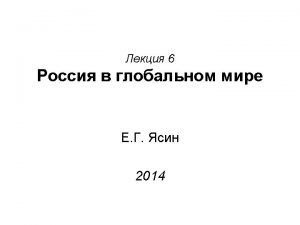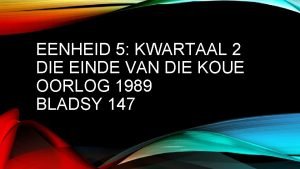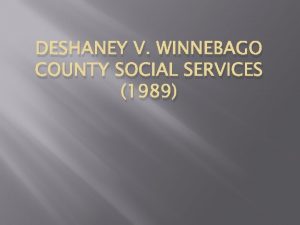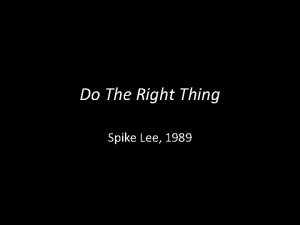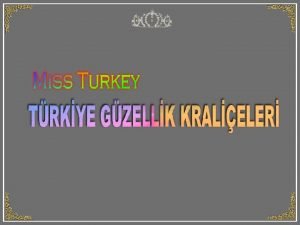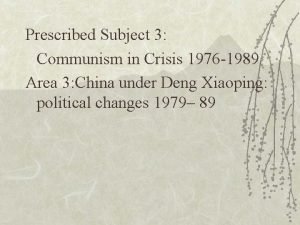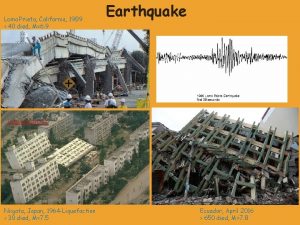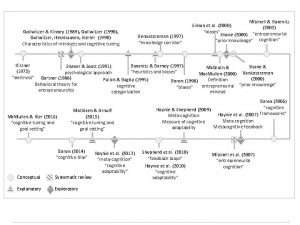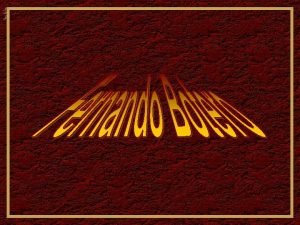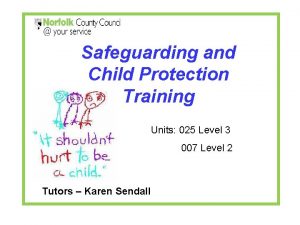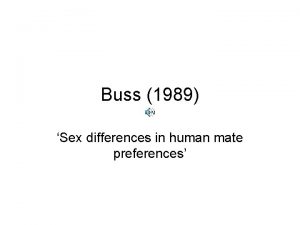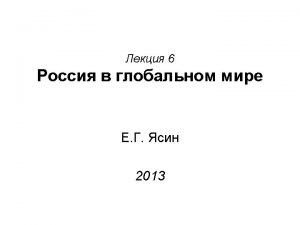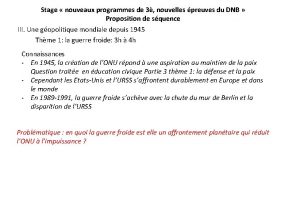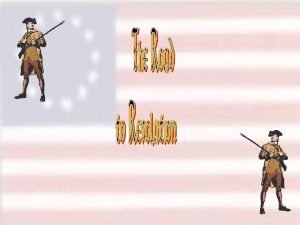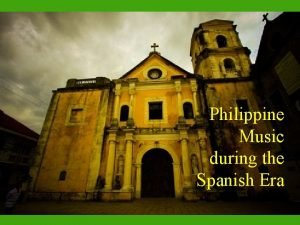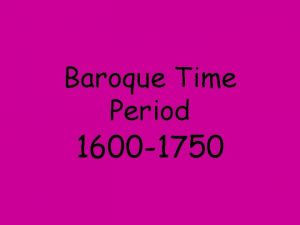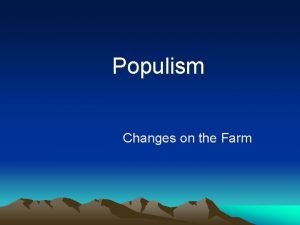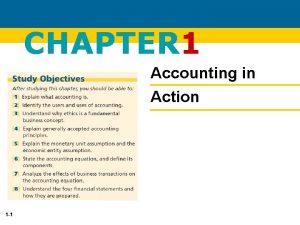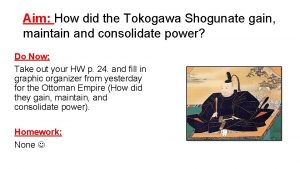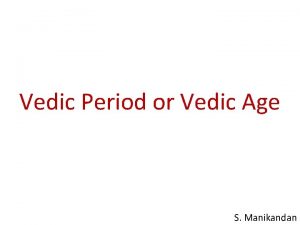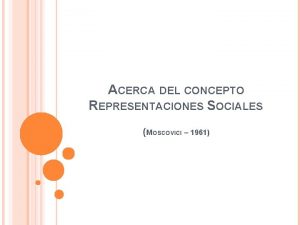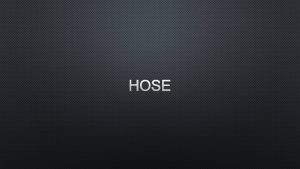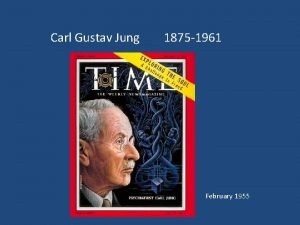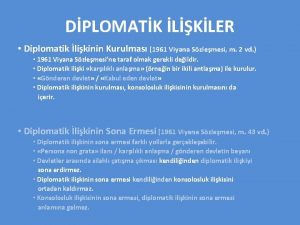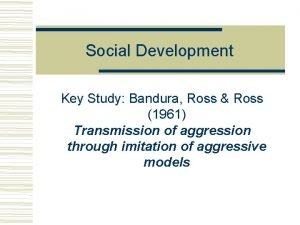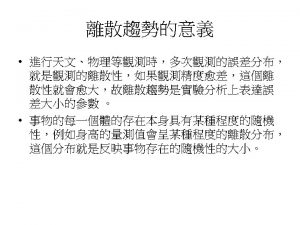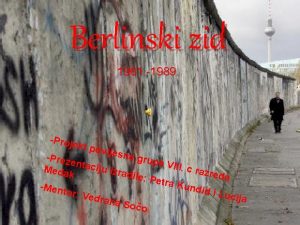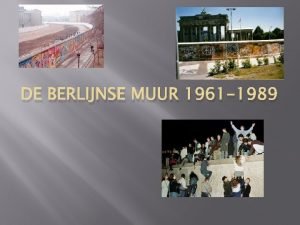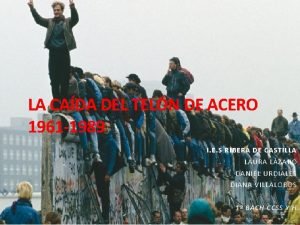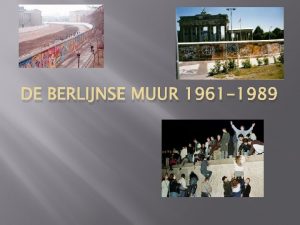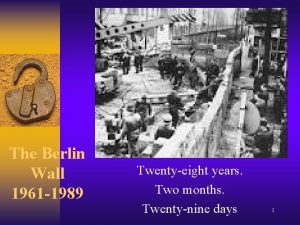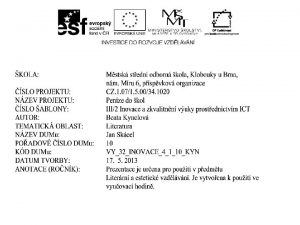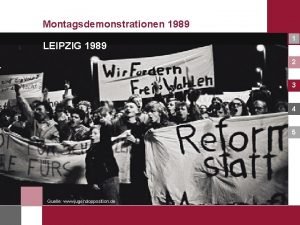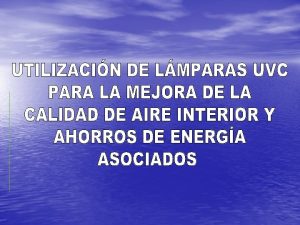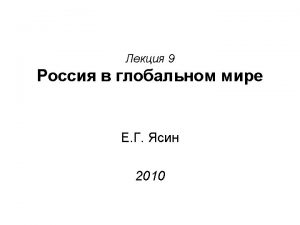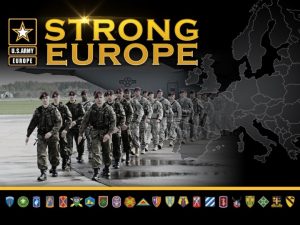During the period from 1961 to 1989 In




































































- Slides: 68


During the period from 1961 to 1989. In the years between 1949 and 1961, about 2. 5 million East Germans had fled from East to West Germany, including steadily rising numbers of skilled workers, professionals, and intellectuals. Their loss threatened to destroy the economic viability of the East German state. In response, East Germany built a barrier to close off East Germans’ access to West Berlin (and hence West Germany). This barrier, the Berlin Wall, was first erected on the night of August 12– 13, 1961, as the result of a decree passed on August 12 by the East German Volkskammer (“Peoples’ Chamber”).


Two months before the wall was build Walter Ulbricht, the East German leader, declared at an international press conference on June 15, 1961: "I understand your question rightly that there are people in West Germany who wish that we mobilize the building worker of the capital of the German Democratic Republic to build up a wall. Not that I am aware of a such intention exists. The building workers of our capital are mainly busy with house building and their manpower is fully used for that. "

The Brandenburg Gate, as seen through a barbed-wire barrier tha t represented the earliest version of the Berlin Wall. John Waterman—Fox Photos/Hulton Archive/Getty Images

The original wall, built of barbed wire and cinder blocks, was subsequently replaced by a series of concrete walls (up to 15 feet [5 metres] high) that were topped with barbed wire and guarded with watchtowers, gun emplacements, and mines. By the 1980 s this system of walls, electrified fences, and fortifications extended 28 miles (45 km) through Berlin, dividing the two parts of the city, and extended a further 75 miles (120 km) around West Berlin, separating it from the rest of East Germany.


Berlin, 1961. Berlin Wall at Zimmerstrasse/Markgrafenstrasse West Berliners watching over the Wall to the East

1961. West Berliners waving and watching their relatives in East Berlin

Berlin, Potsdamer Platz, 60 s (c) 2004 Heiko Burkhardt

The Death Zone, view to Zimmerstrasse East Berlin is situated on the left side Berlin, April 1963

Berlin, Oberbaumbrücke 1962 Remembering on an unknown refugee who was killed by East German border guards


The border area looked about as follows: First, there was a wall. Behind it (at the "eastern" side) there was an illuminated control area (also called death area). Refugees who had reached that area were shot without warning. A trench followed which should prevent vehicles from breaking through. Then there was a patrol track, a corridor with watchdogs, watchtowers and bunkers, and a second wall.


On the Western Side

Life on the Western Side: Offleben Offline

At one border overlook I watched a couple of East German guards busying themselves at the base of a watchtower. Suddenly, they made a beeline for a gate in the fence, entered the no man's land stood just a few feet across the border from me. One of them began taking pictures, the other turned his back as I set up my camera and photographed them. Brian Rose


Life on the Western Side: Neustadt

Only possible on the Western side (Photo taken in 1985)

While in Berlin…

Berlin, Checkpoint Charlie. October 1961

Berlin, Checkpoint Charlie View from West to East Berlin, 1961

On duty at the Checkpoint Charlie Berlin, April 1963 (c) 2002 James B. Osbon

Berlin, Bernauer Strasse. The house is situated in the East, the pedestrian in the West. The windows were walled up to prevent people from escaping to West Berlin (c) 2004 Heiko Burkhardt

The West Berlin authorities thoughtfully put up viewing platforms, so visitors could see over the wall at various key points. They were also thoughtful enough to put up signs, absolving themselves of any responsibility, if the East German border guards opened fire on them. fire on you!

The Brandenburg Gate, from the Western side, c. 1986. During the period the wall existed, only border guards could go into the area where the Gate stood. Even on the Eastern side everyone was kept away.

Potsdamer Platz View from the West to the East Berlin, April 1963

1983 The Church of Reconciliation was the Death Zone and, in 1985, was demolished by the GDR authorities

The building on the left side is situated in the East the building on the right side in the West July 1974

Shack, dustbin and border guards to fire Watchtower in the border area near Eichholz dam / dam Nennhauser (c) 2002 Stephen Pastenaci

Berlin Wall, 1983 Watchtower and wall near the railway line to Hamburg

Berlin Wall St. Hedwig's Cemetery 1983 The fence prevented the freedom to care for the cemetery graves. Entering the cemetery was only permitted with a special card.




U. S. President Ronald Reagan challenging the Soviet Union to tear down the Berlin Wall, at the Brandenburg Gate in West Berlin, 1987. © Corbis

People from East and West Berlin gathering at the Berlin Wall on Nov. 10, 1989, one day after the wall opened. AP

Berlin November 10 th, 1989 Border crossing point at Bornholmer Strasse Every single car from the East is welcomed after opening the border

Berlin November 10 th, 1989




A crowd on top of the Berlin Wall, celebrating the fall of East Germany’s communist government in December 1989. © Owen Franken/Corbis

Berlin Wall April 1990 The street is still closed and the Wall has not been demolished yet

April 1990 The border crossings are opened however the Wall is still under control

Berlin Wall April 1990 Prenzlauer Berg Norwegstr. A last part of the former electrical fence

Soviet Memorial, Berlin, 1990

Checkpoint Charlie, Berlin, 1996

Berlin September 1997 Former border crossing point at Bornholmer Strasse The tram connects former East and West again

Hötensleben Memorial, 1996 Photographs © Brian Rose

A large border memorial lies adjacent to Hötensleben, a former East German town just south of Helmstedt. It was a beautiful fall day, sharp light, deep blue sky. I drove to the memorial and was shocked to see a fairway of green grass where the scraped earth of the death strip used to be. The walls and fences were still there, and the guard tower stood as before on the crest of a hill. But the menacing face of the GDR was softened, even as it was preserved. I photographed the elements of the border apparatus, and I followed the concrete trail of the vehicle track as it disappeared into the landscape Requiem Photographs © Brian Rose

The Guard Tower

The Wall

The Village

The Vehicle Trail

The Death Strip

October 1997 Pankow, Bahnhofstr. The former Wall area got its nature back

Launching the "Peaceful Revolution" of 1989 From: Leipzig, Germany ABOVE: A news photo from the Montagsdemonstration of October 9, 1989. "We had planned everything. We were prepared for everything. But not for candles and prayers. " Horst Sindermann, former GDR official Source: The Events in Fall 1989, Nikolaikirche Leipzig What really brought down the Wall…

What began inside…

1, 200 praying and then -

Moving outside…where the count swelled to 70, 000!


Participants in a "Monday demonstration" in Leipzig on October 23, 1989, five days after the forced resignation of Erich Honecker.

On November 4, 1989, up to 500, 000 people demonstrated peacefully in East Berlin. Oppositional groups and East German artist associations had called for the gathering; it was the largest officially authorized, nonstate organized non-state organized demonstration in GDR history.

The Last "Monday Demonstration" in Leipzig (March 12, 1990)

"We had planned everything. We were prepared for everything. But not for candles and prayers. " – Horst Sindermann
 1961 to 1989
1961 to 1989 1989. gadā kā pretējs spēks ltf tika nodibināta
1989. gadā kā pretējs spēks ltf tika nodibināta 1016 de 1989
1016 de 1989 Dierickx and cool 1989
Dierickx and cool 1989 2011-1989
2011-1989 2007-1989
2007-1989 2011-1989
2011-1989 2007-1989
2007-1989 Percy 1989
Percy 1989 Die einde van die koue oorlog 1989
Die einde van die koue oorlog 1989 Vvvvv 1989
Vvvvv 1989 Joshua deshaney mother
Joshua deshaney mother The little mermaid 1989 characters
The little mermaid 1989 characters Vývoj inflace v čr od roku 1989
Vývoj inflace v čr od roku 1989 Nbr 10844
Nbr 10844 Glicozurie
Glicozurie 1989
1989 Role of a judge
Role of a judge Eksklawa przykłady
Eksklawa przykłady Transformace české ekonomiky po roce 1989
Transformace české ekonomiky po roce 1989 Tiananmen square 1989
Tiananmen square 1989 Nunan 1989
Nunan 1989 1981 türkiye güzeli
1981 türkiye güzeli Vvvvv 1989
Vvvvv 1989 Loma linda earthquake 1989
Loma linda earthquake 1989 Heckhausen 1989
Heckhausen 1989 Escultor colombiano
Escultor colombiano Section 47 children's act 1989
Section 47 children's act 1989 Buss 1989
Buss 1989 2007-1989
2007-1989 Carte urss 1989
Carte urss 1989 Vývoj inflace v čr od roku 1989
Vývoj inflace v čr od roku 1989 Kahulugan ng sining
Kahulugan ng sining During the period of salutary neglect
During the period of salutary neglect Does pregnancy feel like period cramps
Does pregnancy feel like period cramps Period of activism in philippine
Period of activism in philippine Ancient oriental countries
Ancient oriental countries Curriculum during the liberation period
Curriculum during the liberation period Chapter 2 accounting answers
Chapter 2 accounting answers Whats laissez faire
Whats laissez faire Who is the prince of philippine church music
Who is the prince of philippine church music Historical events of the baroque period
Historical events of the baroque period Why had farming become unprofitable during this period?
Why had farming become unprofitable during this period? Net income will result during a time period when
Net income will result during a time period when How did the tokugawa shogunate consolidate power in japan
How did the tokugawa shogunate consolidate power in japan Skill 12 agreement after expressions of quantity
Skill 12 agreement after expressions of quantity Charles revson milady
Charles revson milady Characteristics of philippine opera
Characteristics of philippine opera Political structure of early vedic period
Political structure of early vedic period Critical/sensitive periods
Critical/sensitive periods Stability period vs measurement period
Stability period vs measurement period A&p flix activity: resting membrane potential
A&p flix activity: resting membrane potential Critical period vs sensitive period
Critical period vs sensitive period Trustee period and royal period
Trustee period and royal period When is the relative refractory period
When is the relative refractory period Music of classical period 1750 to 1820
Music of classical period 1750 to 1820 Prehistory vs history
Prehistory vs history Critical period vs sensitive period
Critical period vs sensitive period 29 electrons, period 4
29 electrons, period 4 Cynthia lightfoot
Cynthia lightfoot Moscovici 1961
Moscovici 1961 Nfpa 1961 standard on fire hose
Nfpa 1961 standard on fire hose Charities act 1961
Charities act 1961 Maternity benefit act 1961 notes
Maternity benefit act 1961 notes Gustav klimt mbti
Gustav klimt mbti Bahagian iv seksyen 26 akta perkongsian 1961
Bahagian iv seksyen 26 akta perkongsian 1961 Jacob and monod 1961
Jacob and monod 1961 Viyana sözleşmesi 1961
Viyana sözleşmesi 1961 Bandura ross and ross
Bandura ross and ross
